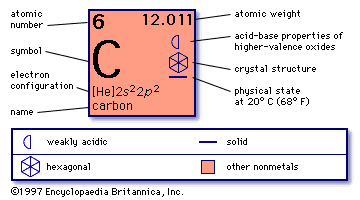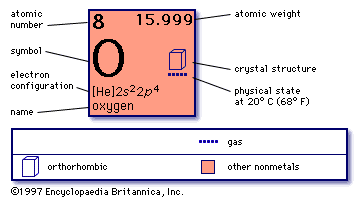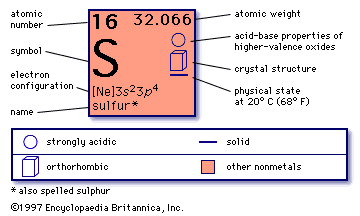page 37
Note: the contents of this page as well as those which precede and follow, must be read as a continuation and/or overlap in order that the continuity about a relationship to/with the dichotomous arrangement of the idea that one could possibly talk seriously about peace from a different perspective as well as the typical dichotomous assignment of Artificial Intelligence (such as the usage of zeros and ones used in computer programming) ... will not be lost (such as war being frequently used to describe an absence of peace and vice-versa). However, if your mind is prone to being distracted by timed or untimed commercialization (such as that seen in various types of American-based television, radio, news media and magazine publishing... not to mention the average classroom which carries over into the everyday workplace), you may be unable to sustain prolonged exposures to divergent ideas about a singular topic without becoming confused, unless the information is provided in a very simplistic manner.
Let's face it, humanity has a lousy definition, accompanying practice, and analysis of peace.
While some of us may call Peace a dream and War a nightmare, what if they are part of the same ideation? In other words, what if they occur in the dream state shared amongst the majority because of some environmentally induced overdose that is acting like a mild poison or intoxicant? Did the idea of Peace and/or War begin as a dream or nightmare? Let's take a look at the subject of dreams from a Britannica article:
|
(A dream can be characterized as) a hallucinatory experience that occurs during sleep. Dreaming, a common and distinctive phenomenon of sleep, has throughout human history given rise to myriad beliefs, fears, and conjectures, both imaginative and experimental, regarding its mysterious nature. While any effort toward classification must be subject to inadequacies, beliefs about dreams nonetheless fall into various classifications depending upon whether dreams are held to be reflections of reality, sources of divination, curative experiences, or evidence of unconscious activity. Despite their generally representational nature, dreams seem somehow odd or strange. Perhaps this is related to discontinuities in time and purpose. One may suddenly find oneself in a familiar auditorium viewing a fencing match rather than hearing a lecture and abruptly in the "next scene" walking beside a swimming pool. These sudden transitions contribute a feeling of strangeness, which is enhanced by the dreamer's inability to recall the bulk of his dreams clearly, giving them a dim, mysterious quality. Diverse views on the nature of dreams Dreams as reflecting reality Philosophers have long noted the similarities between reality and dreaming and the logical difficulties of distinguishing in principle between the two. The English philosopher Bertrand Russell wrote, "It is obviously possible that what we call waking life may be only an unusual and persistent nightmare," and he further stated that "I do not believe that I am now dreaming but I cannot prove I am not." Philosophers have generally tried to resolve such questions by saying that so-called waking experience, unlike dreaming, seems vivid and coherent. As the French philosopher René Descartes put it, "Memory can never connect our dreams one with the other or with the whole course of our lives as it unites events which happen to us while we are awake." Similarly, Russell stated, "Certain uniformities are observed in waking life, while dreams seem quite erratic." Dreams as a source of divination There is an ancient belief that dreams predict the future; the Chester Beatty Papyrus is a record of Egyptian dream interpretations dating from the 12th dynasty (1991-1786 BCE). In Homer's Iliad, Agamemnon is visited in a dream by a messenger of the god Zeus to prescribe his future actions. From India, a document called the Atharvaveda, dated to the 5th century BCE, contains a chapter on dream omens. A Babylonian dream guide was discovered in the ruins of the city of Nineveh among tablets from the library of the emperor Ashurbanipal (668-627 BCE). The Old Testament is rife with accounts of prophetic dreams, those of the pharaohs and of Joseph and Jacob being particularly striking. Among pre-Islamic peoples, dream divination so heavily influenced daily life that the practice was formally forbidden by Muhammad (570-632), the founder of Islam. Ancient and religious literatures express the most confidence about so-called message dreams. Characteristically, a god or some other respected figure appears to the dreamer (typically a king, a hero, or a priest) in time of crisis and states a message. Such reports are found on ancient Sumerian and Egyptian monuments; frequent examples appear in the Bible. Joseph Smith (1805-44), the founder of Mormonism, said that an angel directed him to the location of buried golden tablets that described American Indians as descendants of the tribes of Israel. Not all dream prophecies are so readily accepted. In Homer's Odyssey, for example, dreams are classed as false ("passing through the Gate of Ivory") and as true ("passing the Gate of Horn"). Furthermore, prophetic meaning may be attributed to dream symbolism. In the Bible, Joseph interpreted sheaves of grain and the Moon and stars as symbols of himself and his brethren. In general, the social status of dream interpreters varies; in cultures for which dreams loom important, their interpretation has often been an occupation of priests, elders, or medicine men. An ancient book of dream interpretation was compiled by the 3rd-century soothsayer Artemidorus Daldianus in the Oneirocritica (from the Greek oneiros, "a dream"). Contemporary studies cover dreams and dreaming from a number of perspectives, such as physiology, neuroscience, psychology, and interpretation. Dreams as curative So-called prophetic dreams in the Middle Eastern cultures of antiquity often were combined with other means of prophecy (such as animal sacrifice) and with efforts to heal the sick. In classical Greece, dreams became directly associated with healing. In a practice known as temple sleep, ailing people came to dream in oracular temples such as those of the Greek god of medicine, Asclepius; there, they performed rites or sacrifices in efforts to dream appropriately, and they then slept in wait of the appearance of the god (or his emissary, such as a priest), who would deliver a cure. Many stone monuments placed at the entrances of the temples survive to record dream cures. A practice similar to temple dreaming, known as dream incubation, is recorded in Babylon and Egypt. Dreams as extensions of the waking state Even in early human history, dreams were interpreted as reflections of waking experiences and of emotional needs. In his work Parva naturalia (On the Senses and Their Objects), the Greek philosopher Aristotle (384–322 BCE), despite the practice of divination and incubation among his contemporaries, attributed dreams to sensory impressions from "external objects...pauses within the body...eddies...of sensory movement often remaining like they were when they first started, but often too broken into other forms by collision with obstacles." Anticipating work by the Austrian psychoanalyst Sigmund Freud (1856-1939), Aristotle wrote that sensory function is reduced in sleep, thereby favouring the susceptibility of dreams to emotional subjective distortions. In spite of Aristotle's unusually modern views and even after a devastating attack by the Roman statesman Marcus Tullius Cicero (106-43 BCE) in (De divinatione; "On Divination"), the view that dreams have supernatural attributes was not again challenged on a serious level until the 1850s, with the classic work of the French scientist Alfred Maury, who studied thousands of reported recollections of dreams. Maury concluded that dreams arose from external stimuli, instantaneously accompanying such impressions as they acted upon the sleeping person. Citing a personal example, he wrote that part of his bed once fell on the back of his neck and woke him, leaving the memory of dreaming that he had been brought before a French revolutionary tribunal, questioned, condemned, led to the scaffold, and bound by the executioner, and that the guillotine blade had fallen. The Scottish writer Robert Louis Stevenson said that much of his work was developed by "little people" in his dreams, and he specifically cited the Strange Case of Dr. Jekyll and Mr. Hyde (1886) in this context. The German chemist August Kekule von Stradonitz attributed his interpretation of the ring structure of the benzene molecule to his dream of a snake with its tail in its mouth. Otto Loewi, a German-born physician and pharmacologist, attributed to a dream his inspiration for an experiment with a frog's nerve that helped him win the Nobel Prize for Physiology or Medicine in 1936. In all of these cases, the dreamers reported having thought about the same topics over considerable periods while they were awake. Psychoanalytic Interpretations Among Freud's earliest writings was The Interpretation of Dreams (1899), in which he insisted that dreams are "the royal road to knowledge of activities of the unconscious mind"—in other words, that dreams offer a means of understanding waking experience. He held this theory throughout his career, even mentioning it in his last published statement on dreams, printed about one year before his death. He also offered a theoretical explanation for the bizarre nature of dreams, invented a system for their interpretation, and elaborated on their curative potential. Freud theorized that thinking during sleep tends to be primitive and regressive. Repressed wishes, particularly those associated with sex and hostility, were said to be released in dreams when the inhibitory demands of wakefulness diminished. The content of the dream was said to derive from such stimuli as urinary pressure in the bladder, traces of experiences from the previous day (day residues), and associated infantile memories. The specific dream details were called their manifest content; the presumably repressed wishes being expressed were called the latent content. Freud suggested that the dreamer kept himself from waking and avoided unpleasant awareness of repressed wishes by disguising them as bizarre manifest content in an effort called dreamwork. He held that impulses one fails to satisfy when awake are expressed in dreams as sensory images and scenes. In dreaming, Freud believed: All of the linguistic instruments...of subtle thought are dropped...and abstract terms are taken back to the concrete... The copious employment of symbols...for representing certain objects and processes is in harmony (with) the regression of the mental apparatus and the demands of censorship. Freud submitted that one aspect of manifest content could come to represent a number of latent elements (and vice versa) through a process called condensation. Further displacement of emotional attitudes toward one object or person theoretically could be displaced in dreaming to another object or person or not appear in the dream at all. Freud further observed a process called secondary elaboration, which occurs when people wake and try to remember dreams. They may recall inaccurately in a process of elaboration and rationalization and provide "the dream, a smooth facade, (or by omission) display rents and cracks." This waking activity he called "secondary revision." In seeking the latent meaning of a dream, Freud advised the individual to associate freely about it. Dreams thus represented another source of free association in psychoanalysis. From listening to the associations, the analyst was supposed to determine what the dream represented, in part through an understanding of the personal needs of the dreamer. Using this information, the analyst could help the patient overcome inhibitions that were identified through dreamwork. Unlike Freud, Carl Jung (1875-1961) did not view dreams as complementary to waking mental life with respect to specific instinctual impulses. Jung believed that dreams were instead compensatory, that they balanced whatever elements of character were underrepresented in the way people live their lives. Dreaming, to Jung, represented a continuous 24-hour flow of mental activity that would surface in sleep under conducive conditions but could also affect waking life when one's behaviour denied important elements of one's true personality. In Jung's view, then, dreams are constructed not to conceal or disguise forbidden wishes but to bring the under-attended areas to attention. This function is carried out unconsciously in sleep when people are living emotionally well-balanced lives. If this is not the case, there may be first bad moods and then symptoms in waking. Then and only then do dreams need to be interpreted. This is best done not with a single dream and multiple free associations but with a series of dreams so that the repetitive elements become apparent. Conclusion Since antiquity, dreams have been viewed as a source of divination, as a form of reality, as a curative force, and as an extension or adjunct of the waking state. Contemporary research focuses on efforts to discover and describe unique, complex biochemical and neurophysiological bases of dreaming. Psychoanalytic theorists emphasize the individual meaningfulness of dreams and their relation to personal hopes and fears. Other perspectives assert that dreams convey supernatural meaning, and some regard dreaming as nothing more than the normal activity of the nervous system. Such variety reflects the lack of any single, all-encompassing theory about the nature or purpose of dreams. Wilse B. Webb: Graduate Research Professor of Psychology, University of Florida, Gainesville. Author of Sleep: An Experimental Analysis. Rosalind D. Cartwright: Chairman, Department of Psychology; Director, Sleep Disorder Service, Rush-Presbyterian St. Luke's Medical Center, Chicago. Author of Crisis Dreaming and others. Ed. Source: "Dream." Encyclopædia Britannica Ultimate Reference Suite, 2013. |
It should also be mentioned that there is the view that nightmares is a means by which the organism can be aroused when its physiological processes slow to life-threatening rhythms. No less, when it is said that an indication of dreaming occurs during REM (rapid eye movement) sleep, one need only look about them to recognize that the rapid eye movement of presumed wakefulness may indicate a dream/nightmare state being shared by others. And though we may call a conflict a "world war", not everyone in the world shares in the same episodic reality. Hence, there are what may be called "waking dreams" having different dimensions.
As part of the discussion, let us include a reference to Carl Jung's "Collective Unconscious", because the Peace and War theme(s) suggest both a dream-like and collective unconscious-like state which may represent a collective unconscious dream/nightmare-state:
(The "collective unconscious" is a) term introduced by psychiatrist Carl Jung to represent a form of the unconscious (that part of the mind containing memories and impulses of which the individual is not aware) common to mankind as a whole and originating in the inherited structure of the brain. It is distinct from the personal unconscious, which arises from the experience of the individual. According to Jung, the collective unconscious contains archetypes, or universal primordial images and ideas. [Source: "Collective Unconscious." Encyclopædia Britannica Ultimate Reference Suite, 2013.]
"Archetype" (from Greek archetypos, "original pattern"), in literary criticism, a primordial image, character, or pattern of circumstances that recurs throughout literature and thought consistently enough to be considered a universal concept or situation.
The term was adopted and popularized by literary critics from the writings of the psychologist Carl Jung, who formulated a theory of a "collective unconscious." For Jung, the varieties of human experience have somehow been genetically coded and transferred to successive generations. These primordial image patterns and situations evoke startlingly similar feelings in both reader and author. The Canadian literary critic and theorist Northrop Frye was influential in extending the use of the term archetype to specifically literary contexts. Archetypal criticism has been connected with another group of thinkers more closely allied to its Jungian roots, including Maud Bodkin and James Hillman.
[Source: "Archetype." Encyclopædia Britannica Ultimate Reference Suite, 2013.]

So, are the events of peace and war acted-out dreams and nightmares? Yet, why do they persistently retain a dual nature, like a Janus-faced (two-faced, bipolar, schizophrenic/ambivalent) character portrayed as the god at an archway, or doorway? Are they like a nighttime bed-wetting episode? Are peace and war expressions of "acting out" because social and/or environmental conditions cause repressions? Are dreams, and for that matter... peace and war, types of "literature" because our definitions of what is or isn't literature are too restrictive? Just because they are not "written down" narratives in terms of a conventional book, can not they be a type of "literature" where the "book" is the brain which catalogs certain fundamental categories and characterizations which become embedded in the psyche and is thus transferred... if not orally or in undifferentiated symbolic forms, but transmitted because the intensity of such gets embedded in genetic materials which are sensitively receptive to such? For example, I recall an individual who had a preoccupation with viewing the "exit" sign when they had been subjected to an unwelcomed experience for several months. The desire for escape was so great that the intensity of focus was suggested by them to have created the situation in which their first born child focused on the same "topic" and knew how to spell it long before other words. While we might want to suggest other reasons for the situation, it nonetheless serves as a descriptive illustration of inter-generational transmission of ideas whose origin may not have the same level of corresponding correlations to be offered as an explanation.
Are the topics of war and peace types of enter, exit, detour, or forbidden zone impressions constructed into various representations, like the adoption of one type of web (or house), or artistic/musical construction? For example, does one construct a representation of peace by the typical route of describing something in opposition to some assumed war circumstance, though those who have experienced some type of war for either a short or long period of time will no doubt describe it differently than those who have viewed war-described scenes on TV or in a movie? Is the usage of similar scenes an accurate portrayal of reality or the confession of a limited vocabulary? Does the similarity seen in the designs of spiderwebs, mandalas, Native American sand paintings and dream catchers... irrespective of traditional interpretations; the description of a persistent physiological dimension subjected to a persistent (set of) environmental circumstance(s)? Is there an actual dichotomy or is this a made-up construction to coincide with an underlying type of mental architecture... a blueprint that follows a similar path as that found in the developmental staging of the Three Germ Layers (Triploblastic: Endoderm/Entoderm- Mesoderm- Ectoderm) discovered from the flatworm to humans, with lesser complex organisms exhibiting a single germ layer (monoploblastic) like the sponges and slightly more advanced creatures exhibiting two germ layers (Diploblastic: such as the cnidarians [sea anemones, corals, and jellyfish])?
As with physiological development having a basic "game plan", despite the overt differences of appearances in life forms; peace and war may be an expressed extension of a structure more basic to human mentality/physiology which in turn derives from something more basic in the animal kingdom, and this too is derived from something pre-dating animal origins. Then again, it may have nothing to do with any basic structure whatsoever. And with respect to developmental processes in which we can cite the primivity of design in the sponge, and ...though sponges lack a well-defined organization of tissues, three principal types of cells may be distinguished—choanocytes, archaeocytes, and pinacocytes-collencytes... Britannica: "Sponge" article.
Does the usage of two-patterned ideas represent an old mindset and that the brain is developing into a three-patterned orientation that frequently falls back on a reliance of twos because the human brain in some people has not yet made a firmer transition into using threes? And yet, though we can obviously count to higher numbers, the deteriorations of the environment force us into accepting a conservation of perception as a survival mechanism? Are we then forced to conclude that the human species as we know it must be forcibly evolved into a species whose physiology is not subject to being confined by the effects of Earth such as gravity, sunlight, oxygen, nutrients, etc., in order that a greater truth might be surmised? Will we need to move away from the present carbon basis as related to "CHON..P...S" (carbon, hydrogen, oxygen, nitrogen, phosphorous, sulphur, etc...)?
Is the Peace/War an actual equation or a made-up variable due to the characteristics of our physiology and the environment? Is it an actual pattern-of-two or have those with a two-patterned dominant orientation merely fashioned it as such to correspond to their brain's dominant architecture? Is it a basic matrix existing in the world or only existing in our brains? Is it part of a larger structure such as we might be better able to deduce what it is if we could assign it to a form such as a crystal structure?

Now let's take a look at some information regarding the "CHONPS" group of elements already mentioned and take notice of the crystal structure:
 |
 |
 |
 |
 |
 |
A natural sequence of chemical reactions called the carbon cycle—involving conversion of atmospheric carbon dioxide to carbohydrates by photosynthesis in plants, the consumption of these carbohydrates by animals and oxidation of them through metabolism to produce carbon dioxide and other products, and the return of carbon dioxide to the atmosphere—is one of the most important of all biological processes. Carbon as an element was discovered by the first person to handle charcoal from fire; thus, together with sulfur, iron, tin, lead, copper, mercury, silver, and gold, carbon was one of the small group of elements well known in the ancient world. Modern carbon chemistry dates from the development of coals, petroleum, and natural gas as fuels and from the elucidation of synthetic organic chemistry, both substantially developed since the 1800s. Elemental carbon exists in several forms, each of which has its own physical characteristics. Two of its well-defined forms, diamond and graphite, are crystalline in structure, but they differ in physical properties because the arrangements of the atoms in their structures are dissimilar. A third form, called fullerene, consists of a variety of molecules composed entirely of carbon. Yet another form, known as carbon black, is amorphous in structure and includes charcoal, lampblack, coal, and coke, although X-ray examination has revealed that these substances do possess a low degree of crystallinity. Diamond and graphite occur naturally on Earth, and they also can be produced synthetically; they are chemically inert but do combine with oxygen at high temperatures, just as amorphous carbon does. Fullerene was serendipitously discovered in 1985 as a synthetic product in the course of laboratory experiments to simulate the chemistry in the atmosphere of giant stars. They were later found to occur naturally in tiny amounts on Earth and in meteorites. (Hence, the "amorphous" designation makes the line-up a 3 to 1 example. See: page 14 in this series)
Structure of carbon allotropes When an element exists in more than one crystalline form, those forms are called allotropes; the two most common allotropes of carbon are diamond and graphite. The crystal structure of diamond is an infinite three-dimensional array of carbon atoms, each of which forms a structure in which each of the bonds makes equal angles with its neighbours. If the ends of the bonds are connected, the structure is that of a tetrahedron, a three-sided pyramid of four faces (including the base). Every carbon atom is covalently bonded at the four corners of the tetrahedron to four other carbon atoms. The distance between carbon atoms along the bond is 1.54 x 10-8 centimetre, and this is called the single-bond length. The space lattice of the diamond can be visualized as carbon atoms in puckered hexagonal (six-sided) rings that lie roughly in one plane, the natural cleavage plane of the crystal; and these sheets of hexagonal, puckered rings are stacked in such a way that the atoms in every fourth layer lie in the same position as those in the first layer. The layer arrangement sequence is thus ABCABCA. . . . Such a crystal structure can be destroyed only by the rupture of many strong bonds: thus the extreme hardness, high sublimation temperature, the presumed extremely high melting point (extrapolated from known behaviour), and reduced chemical reactivity and insulating properties are all reasonable consequences of the crystal structure. Because of both the sense and the direction of the tetrahedral axis, four spatial orientations of carbon atoms exist, leading to two tetrahedral and two octahedral (eight-faced) forms of diamond. The crystal structure of graphite amounts to a parallel stacking of layers of carbon atoms. Within each layer the carbon atoms lie in fused hexagonal rings that extend infinitely in two dimensions. The stacking pattern of the layers is ABABA . . . ; that is, each layer separates two identically oriented layers. Within each layer the carbon–carbon bond distance is 1.42 x 10-8 centimetre, which is intermediate between the single bond and double (1.33 x 10-8 centimetre) bond distances. All carbon—carbon bonds within a layer are the same (an observation that is interpreted in terms of complete π-bonding). The interlayer distance (3.37 x 10-8 centimetre) is sufficiently large to preclude localized bonding between the layers; the bonding between layers is probably by van der Waals interaction (i.e., the result of attraction between electrons of one carbon atom and the nuclei of neighbouring atoms). Ready cleavage, as compared with diamond, and electrical conductivity are consequences of the crystal structure of graphite. Other related properties are softness and lubricity (smoothness, slipperiness). A less common form of graphite, which occurs in nature, is based upon an ABCABCA . . . stacking, in which every fourth layer is the same. The amorphous varieties of carbon are based upon microcrystalline forms of graphite. atomic number 6atomic weight 12.011 melting point 3,550 °C (6,420 °F) boiling point 4,827 °C (8,721 °F) density: diamond- 3.52 g/cm3 graphite- 2.25 g/cm3 amorphous- 1.9 g/cm3 oxidation states +2, +3, +4 electron configuration 1s22s22p2 Source: "Carbon." Encyclopædia Britannica Ultimate Reference Suite, 2013. |
In looking at basic structures of various subject matter, our interest is in developing correlative patterns with which to assist us in looking at the peace/war pattern through a different lens and vocabulary which may provide us with an approach to better appreciate the phenomena with the intent of developing answers to the proposed riddle of why the cycle continues to crop up, despite many efforts to establish an enduring rationale for peace that is applicable to all situations. Hence, we may be able to develop a strategy to effectively rival the intensity of interest provoked by using the words "war strategy" which are given more importance than simply using the word "peace" by itself.
Date of Origination: Monday, 20-Feb-2017... 06:40 AM
Date of initial posting: Wednesday, 08-March-2017... 10:39 AM Updated posting: Saturday, 31-March-2018... 12:17 PM